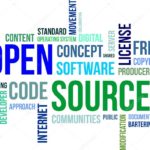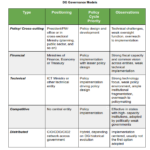The Nordic Office in Copenhagen has started to think on how to reduce the costs of Electoral Voting (EV) systems which apparently are growing overtime and can be a burden for poorer countries. A concept note (BVR Concept Paper 16082012 and annex ANNEX 1_BVR Concept Paper 29062012 TABLE EXPENSES PSO) and ToRs (EVR-Feasibility Study – Terms of Reference 230812 have been drafted by the team in Denmark.
Here are my comments.
1. The ICT issues that related to EVR and e-voting more generally are common to many other areas of e-government or e-governance as we called it in UNDP. We should this bring this experience into the picture.
2. One of the key concepts which I could not find in the concept note is interoperability. This is essentially a policy framework and a ICT solution that allows the various data systems of governments and public institutions speak to each other, regardless of the specific platform, in a seem less fashion. In this fashion both planner and end users benefit as both information and services can be available from one apparent source. This is where the idea of one-stop windows can become a reality. Many countries now have e-governance interoperability frameworks but implementation is still lagging.
The best example of interoperability is Korea where over 3 thousand services are available to citizens in one single virtual location.
3. EVRs can certainly benefit from interoperability if access to civil registers and birth/death certification is required. Also, many countries are now deploying national ID cards (such as India for example) that could be used for EVRs if effective interoperability is available. This in itself will reduce costs for EVRs as there will not need to capture as much information as needed otherwise. Economies of scale are at work here.
4. There are tow dimensions for any ICT solution. The hardware part and the software and application part. We have now moved from the old concept of client server model to web services which today can be accessed with smart phones. In other words, is is not easier and very affordable to access web services. Moreover, some services can be available via SMS,e tc.
5. Hardware costs are declining in real terms (think storage, cost of computers, cell phones, servers,. etc) but in any event the cost per unit of hardware bought if fixed. If we have to buy 3,000 optical scanners I will probably get a discount but I will still have to pay for each of them (unlike software; see below). Also, we need to factor in the emergence of cloud computing which significantly reduces costs, helps the environment and allows for public institutions to dedicate the saved resources to internal capacity building, etc. If we can support cloud computing hosted by developing countries then governments might be willing to chose this option. Using cloud services subject to laws and regulations form foreign countries is a non-starter for many governments.
6. The story with software and applications is very different. Let me introduce here the issue of re-usability of software applications. In the proprietary world, re-usability is linked to licenses. You want to use our application on a wider scale then please pay me for every single user. And if another ministry of public institution wants to re-use it too well I then need to have a separate contract with them and charge them by the number of users. This is the current approach.
7. Now, if you think about it, software applications only need to be developed once. Once they are completed then can be deployed anywhere with a marginal cost of zero. In other words, the costs of reproduction of software applications is zero, unlike hardware. So a regime of intellectual property needs to establish and enforce to prevent this from happening. Thus licenses.
8. Enter Free/Open Source software (FOSS). Be aware that FOSS also has a license and is protected by copyright (they call it copyleft). But the license allows for free re-usability with the condition that a) credit its given to the authors and b) any modifications and additions to the software application are incorporated back into the main product. Also, and unlike proprietary software, FOSS allows users and techies to SEE the source code. This is an important issue as for example the US NSA (probably the largest and most secretive national security agency in the world) uses FOSS for these reason alone!
9. You might recall a few years back a big debate here in the US on EV machines. For some reasons some states bought machines with proprietary software which led to a backlash on such machines. Why? Because there was no way of knowing if the software application was doing any funky things when people were voting. For example, it is very to introduce three lines of code to change someone vote from one candidate to another and NO ONE will ever noticed!
10. At any rate FOSS allows form re-usability at zero cost nominally (needless to say application need to be customized and improved all the time so there are some costs but not based on licenses). Now if we think this from a development point of view, we need to consider the following: public funding (being internal national resources or ODA) is being used to procure and deploy software applications all the time. In many cases, ministries are deploying the same solution and paying the same exorbitant prices for licenses and maintenance countries. For example, Brazil was paying close to 1 billion dollars in licenses and this decided 10 years ago to switch to FOSS, not only to save money but also to build national software capacity and promote local enterprises to support FOSS. In other words, to create a full ecosystem
around this decision -as otherwise it would not have worked.
11. If public funding is being use to develop say an accounting or inventory solution, it makes a lot of sense to be able to re-use that application in other instances at almost no cost. After all, these are public resources that should be used to support public goods and the public good too.
12. The issue here is that most countries (and also UNDP) are not aware of this alternative. FUD (fear, uncertainty and
doubt) has been used by proprietary companies to make sure FOSS is not an alternative (and BTW I see some of the FUD made it into the draft concept note). But the tide is turning as a) fiscal crises are making things very tight for public entities and b) FOSS is now also part of the mobile revolution: 48% of the worlds’ cell phones run on Android, a FOSS platform.
13. After this very long detour, we can now go back to the subject matter. First of all, we should be aware that UNDP is not out there to promote FOSS or proprietary solutions for EVR and EV systems (we should think beyond EVRs please). We are there to increase the number f options our clients and programme countries have to make their own choices. We are there to also help create a level playing filed when it comes to software solutions. What the concept note is telling me is that such level playing filed for EVRs does not exist. On the contrary, it seems some are fighting hard to prevent this from happening -in spite of the tide that is turning on a global scale
14. UNDP should thus explore ways to do this and contribute to the issue of re-usability by providing solutions that allow this to happen in a cost effective fashion. A focus should probably be place on LDCs and LICs where budgets and capacities are usually tight for having sustainable operations.
Cheers, Raúl





